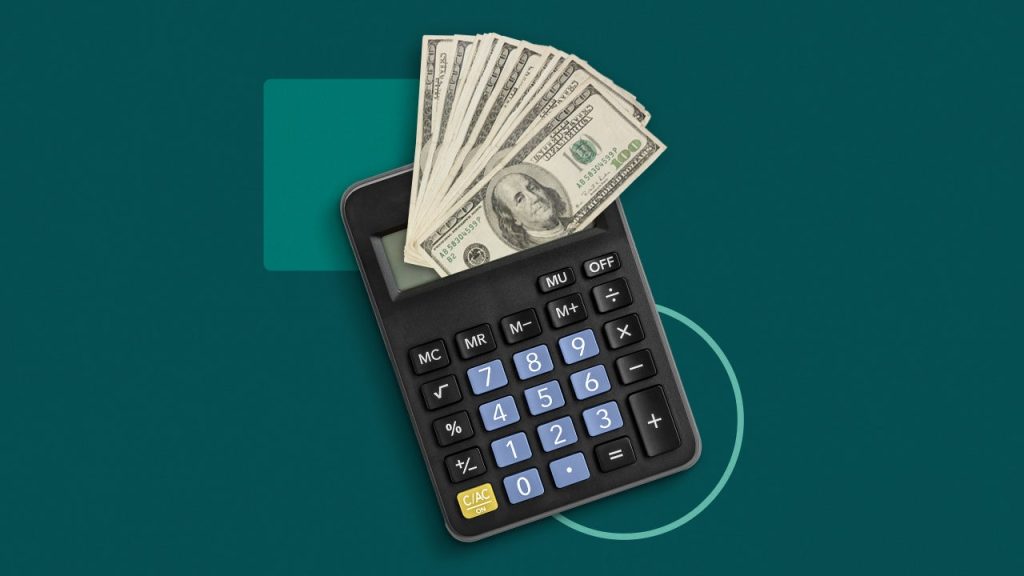Taking out a personal loan is a significant financial decision, and a critical part of that decision-making process is understanding its true cost. Many borrowers focus solely on the monthly amortization, but this can be misleading. To borrow responsibly, you must know how to calculate personal loan interest and related fees in the Philippines. This comprehensive guide will demystify the numbers, explain the difference between various interest rates, walk you through the calculation process, and help you uncover all the fees so you can make an informed choice that fits your budget.
The Importance of Understanding Your Loan’s True Cost
The headline interest rate is often the most advertised feature of a loan, but it rarely tells the whole story. To get a clear picture of what you’ll actually pay, you need to dig deeper and understand the various components of your loan’s cost.
Differentiating Monthly Add-On Rate and Effective Interest Rate (EIR)
When shopping for a personal loan, you will encounter two primary interest rates: the monthly add-on rate and the effective interest rate (EIR). Understanding the difference between these two is fundamental to correctly calculating your loan’s total cost. The monthly add-on rate is the simplest form of interest calculation and is what most lenders use to advertise their loans. It is a flat percentage applied to the original principal amount for the entire duration of the loan. This total interest is then added to the principal, and the sum is divided by the number of months in the loan term to get your fixed monthly amortization. For example, if you borrow PHP 100,000 for 12 months at a 1.5% monthly add-on rate, the total interest is calculated once at the beginning (100,000 x 1.5% x 12 = PHP 18,000). Your total repayment would be PHP 118,000, and your monthly amortization would be a fixed PHP 9,833.33.
The effective interest rate (EIR), on the other hand, is the more accurate measure of a loan’s true cost. The Bangko Sentral ng Pilipinas (BSP) requires lenders to disclose the EIR to ensure transparency. The EIR accounts for the diminishing principal balance over time, as each monthly payment includes a portion of both the principal and the interest. Since the interest is calculated on the remaining balance, the actual rate you are paying is higher than the advertised monthly add-on rate. The EIR also includes all the fees and charges associated with the loan, giving you a full picture of the annual cost of borrowing. A loan with a low monthly add-on rate may have a high EIR if there are significant fees and charges. Therefore, to truly compare different loan products, you should always compare the EIR, not just the monthly add-on rate. This is the key to mastering how to calculate personal loan interest and related fees.
Why a Simple Interest Rate Is Not Enough
A personal loan is not just about the interest rate. There are several other fees and charges that can significantly increase the total cost of your borrowing. Ignoring these can lead to a rude awakening down the road. For instance, a loan with a low monthly add-on rate might look very attractive, but if it comes with a high processing fee, a large documentary stamp tax, and a pre-termination fee, the total amount you repay could be much higher than a loan with a slightly higher interest rate but no other fees. This is why a simple interest rate is not enough; you need a holistic understanding of all the costs involved.
When you sign a loan agreement, you are legally bound to repay not only the principal and interest but also all the fees outlined in the disclosure statement. These fees can include a one-time processing fee that is deducted from your loan proceeds, a documentary stamp tax that is legally required for loans above a certain amount, and various other charges. By understanding and calculating all these costs upfront, you can avoid surprises and budget effectively. Moreover, knowing about potential fees like late payment charges and pre-termination penalties can help you manage your loan more responsibly and save money in the long run.
A Step-by-Step Guide on How to Calculate Personal Loan Interest and Related Fees
To calculate the total cost of your loan, you need to go beyond the simple amortization and factor in all fees. Here is a step-by-step guide to help you master this process.

Step 1: Calculating the Amortization for a Fixed-Rate Loan
Most personal loans in the Philippines use a fixed-rate, add-on interest method. This method simplifies the calculation, but as mentioned, it doesn’t give you the full picture. The monthly amortization is a fixed amount that you will pay throughout the loan term.
The formula for calculating the monthly amortization is:
Let’s use an example to illustrate this. Say you want to borrow PHP 50,000 over a 12-month term with a 1.5% monthly add-on rate.
- Calculate the total interest:
- Calculate the total repayment:
- Calculate the monthly amortization:
This PHP 4,916.67 is the fixed amount you will pay every month. While this calculation is straightforward, it does not include the other fees that will be deducted from your loan proceeds or charged separately. That’s why it is only the first step in understanding the true cost of your loan.
Step 2: Accounting for One-Time and Recurring Fees
A complete understanding of your loan’s cost requires you to identify and account for all the fees and charges. These fees are typically detailed in the loan’s disclosure statement and are a major factor in the total cost of your loan.
Here are some of the most common fees you will encounter:
- Processing Fee: This is a one-time charge for processing your loan application. It is typically a fixed amount (e.g., PHP 1,500 to PHP 3,000) and is often deducted directly from your loan proceeds before the money is disbursed to you.
- Documentary Stamp Tax (DST): This is a mandatory tax imposed by the Bureau of Internal Revenue (BIR) on loan documents. As of the current tax laws, the DST is PHP 1.50 for every PHP 200 of the loan amount. However, loans below PHP 250,000 for personal use are currently exempt. You must verify the current exemption and rates with your lender.
- Disbursement Fee: This is a fee for the physical transfer of the loan proceeds to your account. Not all lenders charge this, but it’s important to be aware of it.
- Late Payment Fee: This is a penalty charged if you miss a monthly payment. It is usually a fixed amount or a percentage of the overdue installment and can significantly increase your debt if not managed carefully.
- Pre-termination or Pre-payment Fee: This fee is charged if you decide to pay off your loan earlier than the agreed-upon term. It’s important to ask about this fee, as a high pre-termination fee can negate the benefits of paying off your loan early.
To get the true cost of your loan, you should calculate the total amount of these fees and add them to your total repayment amount. For example, if you borrowed PHP 50,000 and had a processing fee of PHP 1,500, you would only receive PHP 48,500, but you would still be paying back the full PHP 59,000 (principal + interest).
Practical Examples and Tools for Calculation
To tie everything together, let’s look at a detailed example and explore the tools that can help you with these calculations.

A Sample Loan Calculation Breakdown
Let’s assume you’re looking to borrow PHP 100,000 over 24 months from a bank that charges a 1.25% monthly add-on rate. The bank also has a PHP 2,000 processing fee and a PHP 500 documentary stamp tax (for this example, we assume your loan is over the DST-exempt threshold).
- Total Interest:
- Total Repayment (Principal + Interest):
- Monthly Amortization:
- Total Fees: Processing Fee (PHP 2,000) + DST (PHP 500) = PHP 2,500
- Actual Cash Received (Loan Proceeds):
- Total Amount Paid Back: (Principal + Interest)
- Total Cost of Borrowing (Interest + Fees):
As you can see, even though the monthly payment is a manageable PHP 5,416.67, the total cost of borrowing is a significant PHP 32,500. This is the figure that truly reflects the cost of your loan and is what you should use for comparison.
The Benefits of Using Online Loan Calculators
While the manual calculation is crucial for understanding the mechanics, you don’t have to do it by hand every time. Almost all reputable banks and online lenders in the Philippines offer a loan calculator on their website or app. These tools are incredibly useful for getting a quick estimate of your monthly amortization and total loan cost. When using an online calculator, ensure it includes all fees and clearly states the EIR. A good calculator will allow you to input different loan amounts, terms, and interest rates to help you find a loan that fits your budget. Many online aggregators also offer tools that let you compare multiple loan products side-by-side, making it even easier to find the most affordable option.
Conclusion
Understanding how to calculate personal loan interest and related fees is an empowering skill that can save you a significant amount of money. By looking beyond the headline interest rate and scrutinizing the total cost of borrowing—including the EIR and all associated fees—you can make a truly informed decision. Always ask for a full disclosure statement from your lender, use online calculators to compare options, and choose a loan that not only has a manageable monthly amortization but also a low total cost. This due diligence is the key to borrowing responsibly and maintaining your financial health.













